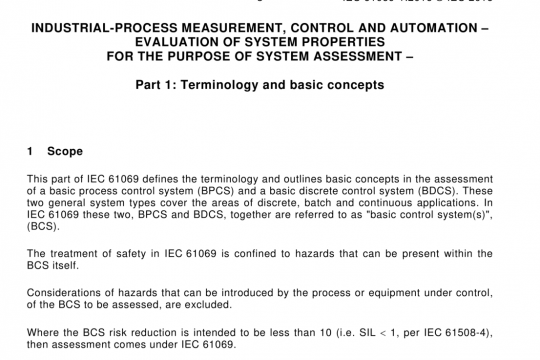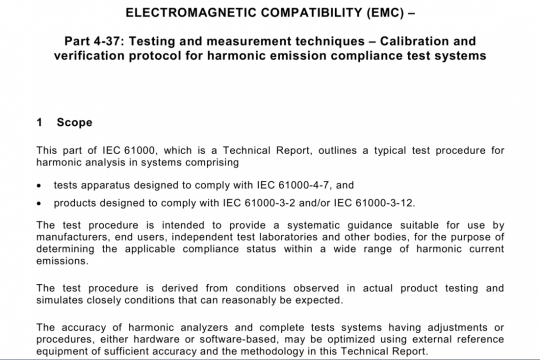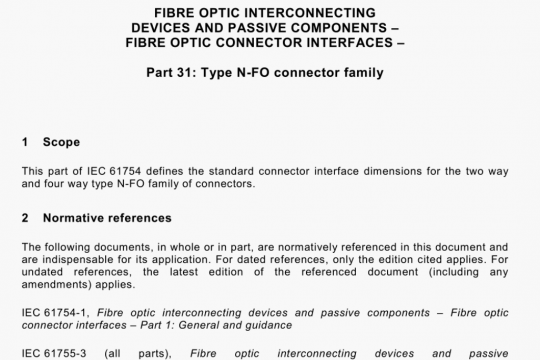IEC 62973-4 pdf free download
IEC 62973-4 pdf free download.Railway applications – Rolling stock – Batteries for auxiliary power supply systems – Part 4: Secondary sealed nickel-metal hydride batteries.
The interface system between the battery charging system and the battery box as shown in Figure 4 consists of:
a) Battery voltage sensing and regulation; maximum ±1 % tolerance (see (1) in Figure 4);
b) Temperature data acquisition, (2a), including wiring (2b) to the sensor (3); typically, better than ±2,5 K tolerance;
c) Temperature sensor (3): maximum tolerance ±2 K for the specified temperature range preferably attached to the battery, minimum one sensor per battery system (see (3)); The choice of the temperature sensor shall be agreed between the system integrator and the suppliers of the battery and battery charging system;
d) Position of the temperature sensor (3) within the battery box (4);
e) Cabling between battery and battery charger; part of system integration in the rolling stock
(5).
The system integrator will check if and how the effect of the wiring needs to be compensated, considering voltage drop in the power cables and resistance in the temperature sensor wires.
The impact of the sensor wiring depends on the type of temperature sensor, data acquisition system and/or location of the voltage sensor. If there are significant influences, it is possible to compensate these influences in the battery charger control system upon agreement between the system integrator and the manufacturer of the battery charging system.
With the recommended temperature sensors, the influence of the wiring resistance on the temperature acquisition can be neglected.
The charging voltage of the battery shall be limited to the maximum voltage at the equipment in Table I of IEC 62973-1:2018. The temperature compensation voltage control should be limited to these values considering the charging cell voltage values in Table 2 multiplied by the number of cells in series for the battery.
The typical charging voltages per cell for most applications are shown in Table 2 with temperature compensation voltage control. Higher or lower values, within the above limits, can be selected depending on sizing and application parameters (e.g. a single level float charge voltage of 1,40 V/cell without temperature compensation voltage control charging is typical).
4.5.2 Deep discharge of batteries Refer to IEC 62973-1.
There is a possibility that deep discharge leads to performance degradation due to pressure rise in the sealed Ni-MH cells, leakage of the electrolyte and degradation of active materials.
4.5.3 Temperature compensation during charging
Charging voltage of the sealed nickel-metal hydride batteries changes depending on
temperature (see Figure 5).
For auxiliary power supply systems used on rolling stock, batteries are kept fully charged. By controlling setting of charging voltage based on a temperature sensor in the battery box, it is possible to utilize the capacity fully.
The battery charging voltage should be temperature controlled. Refer to 4.4.2.
4.6 Fire protection Refer to IEC 62973-1.
There is a possibility that sudden temperature rise of battery modules by internal shortcircuiting causes rupturing of the battery modules and spark. However, parts in battery modules, e.g. electrolyte, are non-flammable and battery modules do not continue burning. On the other hand, attention should be paid to propagation of fire to adjacent parts by the spark.
Fire-retardant materials for parts in the battery box shall be used.IEC 62973-4 pdf free download.




